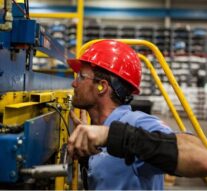
The EU and the balance between energy goals and competitiveness
Employment and Social Affairs 24 May 2023Estimated time of reading: ~ 2 minutes
Can the ambitious EU goals on energy and climate issues coexist with the needs of European industries? This question is crucial to the future path of sustainability and competitiveness for the whole EU, which is battling for the reprise of economic growth while trying to apply the standards and rules formulated by the member states and the European institutions.
The starting point is quite complex: industries in Europe have been acutely affected by the energy crisis, while suffering from a disadvantage against global competitors, especially those in Asia. Still, economic data from Eurostat show resilience on the production side, a trend that spans all of 2022 and the beginning of 2023. This testifies to the capabilities of European industries even in the face of a major disruptive event such as the war in Ukraine.
Generally speaking, there are also negative aspects, especially with the high-consuming industries that have been hit by the energy crisis or hampered by the EU goals. In this dynamic, many metal foundries and fertilizer industries were forced to shut down in 2022, and the future path doesn’t look so clear.
Then, in the summer of 2022, the Inflation Reduction Act (IRA) was passed by the 117th United States Congress and signed into law by President Joe Biden on August 16, creating at least some concerns in the European capitals regarding the potential effects of this law on their industries. While the US seeks a huge shift towards clean energy, mirroring what the EU has already decided to do, the IRA may threaten European interests overseas, i.e., those of the automotive companies. In short, finding a balance between the search for competitiveness and complying with the energy goals will be fundamental for the EU and the future of its industries and working sectors.
Written by: Francesco Marino


